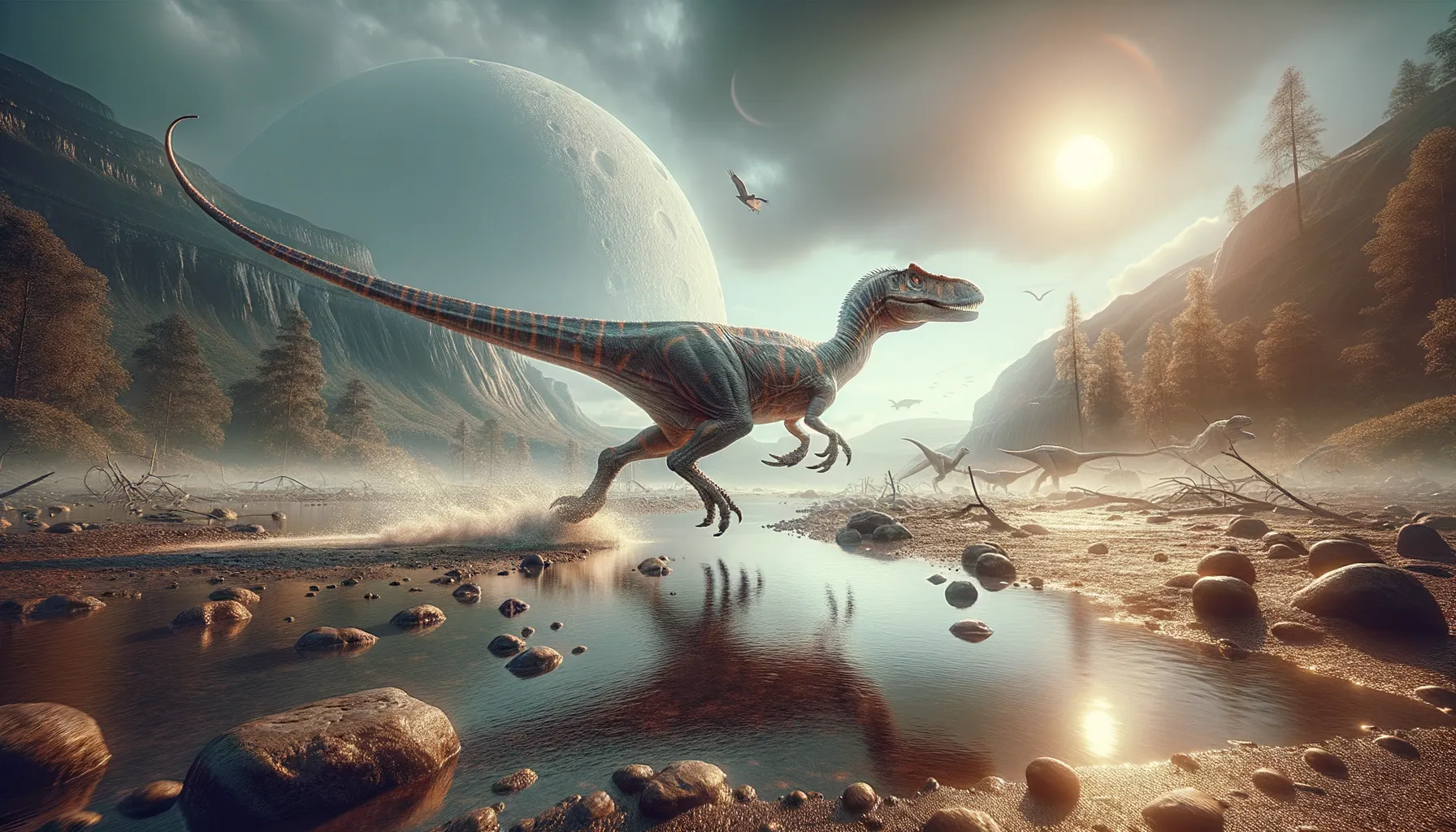
Galesaurus
Swift predator from the dawn of time!
Period
triassic
Length
Approximately 1 meter long.
Height
About 30 centimeters at the shoulder.
Weight
Roughly the same weight as a medium-sized dog.
Galesaurus was a small therapsid, often mistakenly called a dinosaur, that roamed the ancient landscapes of the Permian period. Known for its agility and adaptability, it had features that were a mix between mammals and reptiles, giving it a unique edge in its environment. Fossils suggest it was a swift-moving predator, capturing small prey with ease. It is one of the early ancestors of mammals, providing crucial insights into evolutionary biology.
Diet
Galesaurus was a carnivorous creature, mostly preying on small animals and insects. Its diet helped it swiftly adapt to its terrestrial lifestyle.
Hunting
It likely hunted during the day or twilight hours, using its keen senses to detect motion. It may have ambushed prey, relying on its speed and agility.
Environmental challenges
Galesaurus faced a changing climate towards the end of the Permian, which may have drastically affected its food supply. Growing aridity and changing vegetation types posed additional challenges. Larger predators also posed a threat, driving Galesaurus to adapt with swifter, more evasive behavior.
Speed
Moderately quick for its small size.
Lifespan
Lived a few decades, similar to modern reptiles.
First discovery
First discovered in South Africa in the 19th century.
Fun Facts
- Galesaurus lived during the Early Triassic period, around 250 million years ago.
- Despite its name, Galesaurus is not actually a dinosaur but a therapsid, an ancient relative of mammals.
- Galesaurus was a small creature, about the size of a domestic cat, with a long tail and short legs.
- It had sharp teeth, indicating it might have been a carnivore or omnivore, feeding on insects and small vertebrates.
- Galesaurus fossils have been found primarily in South Africa, providing important insights into early terrestrial ecosystems.
- The name 'Galesaurus' means 'weasel lizard' due to its weasel-like body shape.
- Galesaurus is often studied to understand the evolutionary transition from reptiles to mammals.
Growth and Development
Galesaurus developed relatively quickly, reaching maturity in a few years. Its growth trajectory was likely influenced by environmental pressures, necessitating fast maturation. Juveniles would have closely resembled adults, optimizing their survival chances.
Habitat
Galesaurus thrived in a semi-arid environment with sparse vegetation. It likely lived in underground burrows to protect itself from predators and harsh weather. The landscape provided both challenges and opportunities, pushing it to develop unique adaptations.
Interaction with other species
It coexisted with both herbivorous and carnivorous species, often competing for similar prey. Larger predators posed significant threats, and it had to remain vigilant. Galesaurus probably avoided interactions with direct competitors through nocturnal or crepuscular habits.
Natural lifespan
Galesaurus had a natural lifespan similar to medium-sized mammals today, potentially a few decades.
Reproduction
Little is known about its exact reproductive habits, but it may have laid eggs or bore live young, akin to early mammals. Parental care could have played a role, with adult Galesaurus possibly guarding or nurturing young ones.
Social behaviour
Galesaurus might have been a solitary creature, coming together only during mating seasons. Vocalization or scent may have been used for communication. Territorial instincts could have led to frequent confrontations with others of its kind.
Fossil locations
Fossils of Galesaurus have been primarily found in the Karoo Basin of South Africa. These discoveries have provided substantial insights into the transitional nature of early therapsids. The richness of these sites has also helped paint a detailed picture of Permian-era ecosystems.
